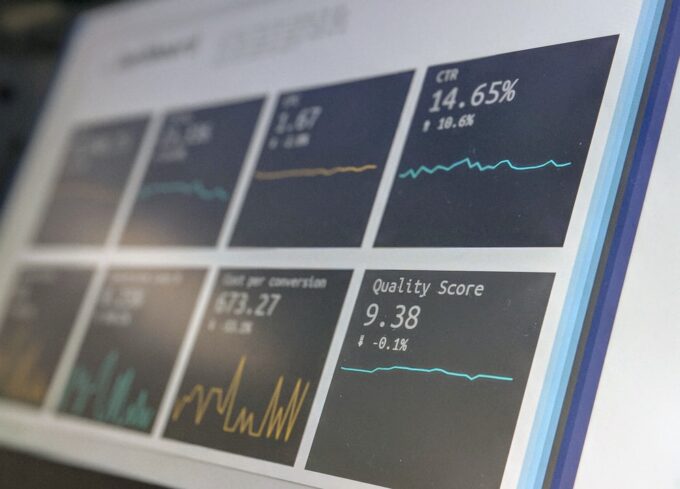The sample is a collective unit of elements or participants used for surveying and research. Analyses of samples help researchers to identify and measure the trends, without having to take account of the entire populace. The research credibility by using samples will depend on sample sizes, choice of participants, and source from where the data is collected.
Broadly it can be classified into 2 types:
- probability sample
- non-probability sample
Here we shall discuss both the types, so that can distinguish the right one for your surveying or research requirements.
Ovationmr.com is the industry leader that delivers highly advanced sampling services to businesses for B2B research, healthcare surveys, and consumer panel surveys. Their accurate and quick global targeting and reliable validation benefit organizations in making insightful decisions.

img source: unsplash.com
Sampling Method
It is the process wherein the researchers define the segment of people (and their numbers) for representation. The study will then be based on that particular segment of people or elements. In order to know better about the 2 types of doing the sampling, let us get to know about their pros and cons.
Probability Sampling Method
Here the surveyors will randomly choose the participants. It enables them to get the participants having diverse interests and preferences. They will have to set up a specific selection process to ensure that the different units of sample population have some common aspects for getting selected. In this type, respondents randomly accept invites for taking up the survey, or some other research data collection mode.
Every individual person gets an equal opportunity for getting enrolled. Probability sampling is used mostly for forecasting election polling numbers, public opinion studies, and other studies. Generally, more numbers of people join to make the sample size.
Probability Sampling – Different Types:
This method of can be done with the help of several techniques such as:

img source: unsplash.com
- Simple Random Sample
This is the commonest method used in many surveys. Here, each person from the segment is allocated with a number. Software or a program is deployed to select people on a totally random basis.
- Stratified Random Sample
Here again the sampling is randomly conducted, but after subdividing the total participants into smaller groups.
- Cluster Sample
In this type, the population is first split into unique clusters, and then the participants are moved in randomly from each cluster.
The main benefit of this type is the convenience and ease that it gives to the researching process. It does however have its drawbacks. The results could be far from being accurate if the clusters are not homogeneous.
- Systematic Sample
This is the method where the sample participants are chosen by using fixed time intervals.
- Multi-Stage Sampling
In this type, the randomization is highly minimized to give more accuracy to the outcome of the survey. This is an advanced method for sampling, wherein the market researchers smartly adopt the combinations of different methods of sampling mentioned above.
The combination of different methods at varying levels helps researchers provide confidence and mitigate the subjective opinions and biases to a considerable extent.
Probability Sampling – Benefits and Drawbacks of Different Types

img source: unsplash.com
Every method comes with its own set of benefits and drawbacks. However, all of them help to minimize the biases and subjective opinions. It implies that it lowers the chances of over-exaggerations or misrepresentations. The results are more accurate as the process is based on statistical techniques to confirm the results.
Advantages of Probability Sampling
- Simple random is used quite a lot because of the ease and convenience.
- It is ideal for surveying the entire population.
- It helps to create broad layers in the population.
- Random number generators are not needed for Systematic sampling.
Disadvantages of Probability Sampling
- Cluster sampling can lead to inaccurate results if unit members aren’t homogeneous
- Stratified and simple random samplings are a tedious and time-consuming process as they work with large sample sizes.
- Systematic sampling requires a lot of expertise and skills.
Non-Probability Sampling
Here the sample creation process is totally devoid of any randomness. It is used quite extensively for doing qualitative research, and also on surveys in the exploratory stages of the market research.
Here the market researcher performs targeted research, and the samples are invited or hired from precise lists. Alternatively, he can send a survey link to random people or known ones in its community or online space.
Non-probability sampling is proven to be an affordable and quick approach when compared to the probability type. It is mostly because of smaller data size, but it depends on several variables for choosing samples.
Non-Probability – Different Types of This Sampling
It is categorized into the following types:

img source: unsplash.com
Convenience Sample
This method is quick and easy. However, it is not suitable for studying a wider spectrum of population. The method is mostly used by people who can conveniently access a study. This comprises friends, random people on the street, or those admitted to a university course.
Snowball Sample
These surveys recruit sample members who show keenness of participating in an event. People in this survey will have specific demography, and should necessarily match the given criteria.
Quota Sample
The participants in this method are further bifurcated into smaller groups based on various parameters like location, age, targets, etc.
Purposive Sample
Here the job of choosing the sample participants is totally at the discretion of the researcher. The person will choose the samples as per his/her knowledge, experience, historical data, etc.
GeoPoll Sampling Methods
Here the researcher can use different methods mentioned above in this post. They are chosen as per the study requirements. It can also use probability-based methods for sample selection. This can also comprise stratified random sampling to develop wider or national samples.
Conclusion
The probability sampling method is ideal for surveying bigger groups. On the other hand, non-probability sampling allows for accurate results. The choice should ideally depend on the purpose of the study. Now that you have understood the different types, you should find it simple to choose the right sampling methods as per your specific requirements.







